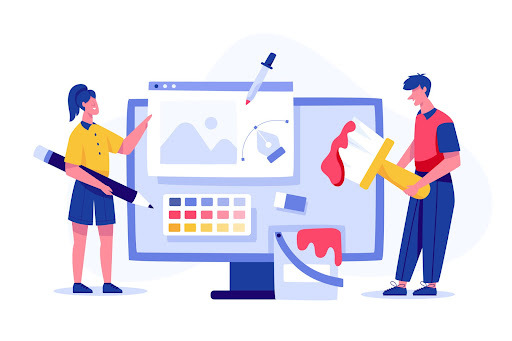In today's visually-driven world, graphic designers play a crucial role in helping businesses communicate their brand messages effectively. Hiring and retaining top graphic designer talent is essential for companies seeking to create captivating visuals that resonate with their target audience. HR professionals are at the forefront of the talent acquisition and retention process, and in this guide, we will explore the best practices and strategies they can employ to attract and keep top graphic designers on board.
1. Crafting an Attractive Job Description
Crafting an attractive graphic designer job description is the first step in attracting top graphic designer talent. The job description should provide a comprehensive overview of the graphic designer job description, including the role, responsibilities, and expectations. It should highlight the organization's commitment to creativity, innovation, and design excellence, as outlined in the graphic designer job description. Clear and concise language, along with an emphasis on the impact of the graphic designer's work, will pique the interest of potential candidates looking for a graphic designer job description.
2. Creating a Compelling Employer Brand
An organization's employer brand is a critical factor in attracting top talent. HR professionals must work with marketing teams to create a compelling employer brand that showcases the company's culture, values, and commitment to design excellence. Highlighting the opportunities for growth, collaboration, and meaningful work will resonate with graphic designers seeking a fulfilling career.
3. Building an Inclusive and Diverse Workplace
An inclusive and diverse workplace fosters creativity and innovation. HR should prioritize building a culture that celebrates individuality and welcomes diverse perspectives. Promoting diversity in the workplace attracts graphic designers from varied backgrounds, enhancing creativity and enriching the design process.
4. Implementing a Thorough Recruitment Process
A thorough recruitment process ensures that the organization selects the best fit for the graphic designer role. HR professionals should conduct interviews that assess both technical skills and cultural fit. Including design-related assignments or challenges in the recruitment process enables candidates to showcase their creativity and problem-solving abilities.
5. Showcasing a Portfolio Review
Requesting a portfolio review is a crucial step in evaluating a graphic designer's capabilities. HR professionals should closely examine the candidates' portfolios to assess their artistic skills, style, and ability to convey ideas visually. A strong portfolio demonstrates a candidate's versatility and creativity.
6. Conducting a Skills Assessment
In addition to portfolio reviews, conducting a skills assessment is essential to evaluate a graphic designer's proficiency in relevant software and design techniques. HR professionals can use assessments or ask candidates to complete design tasks to gauge their technical expertise.
7. Offering Competitive Compensation and Benefits
Top graphic designers are in high demand, and HR must offer competitive compensation and benefits to attract and retain them. A comprehensive salary package, performance-based bonuses, health insurance, and additional perks demonstrate the organization's commitment to valuing the graphic designer's contributions.
8. Providing Opportunities for Skill Development
Graphic designers value organizations that invest in their professional growth. HR professionals should provide opportunities for skill development, such as workshops, training sessions, and access to design resources. Encouraging continuous learning enhances the designer's expertise and contributes to their job satisfaction.
9. Fostering a Creative and Collaborative Environment
Creating a creative and collaborative environment is crucial for graphic designers to thrive. HR professionals should encourage cross-functional collaboration, support brainstorming sessions, and promote an atmosphere that nurtures creativity and idea-sharing.
10. Emphasizing Work-Life Balance and Flexibility
Work-life balance and flexibility are highly valued by graphic designers. HR professionals should promote work-life balance and offer flexible work arrangements when possible. Allowing designers to manage their schedules enhances their productivity and job satisfaction.
11. Recognizing and Rewarding Exceptional Work
Recognizing and rewarding exceptional work motivates graphic designers to perform at their best. HR should implement recognition programs, such as employee spotlights and awards, to acknowledge outstanding contributions.
12. Nurturing Career Progression and Growth
Providing a clear career path and opportunities for advancement is vital for retaining top graphic designers. HR professionals should work with managers to create development plans that align with the designer's aspirations and organizational needs.
13. Gathering Employee Feedback and Addressing Concerns
HR professionals should regularly gather feedback from graphic designers to identify areas for improvement and address any concerns. Creating an open and supportive environment allows designers to voice their opinions and contribute to the organization's success.
Conclusion
Hiring and retaining top graphic designer talent is a strategic priority for HR professionals. By understanding the role of graphic designers, crafting attractive job descriptions, and building a compelling employer brand, HR can attract highly skilled candidates. Implementing a thorough recruitment process, showcasing portfolio reviews, and offering competitive compensation contribute to successful talent acquisition. Nurturing a creative and inclusive workplace, emphasizing work-life balance, and providing opportunities for skill development enhance retention efforts. Recognizing exceptional work, nurturing career progression, and gathering employee feedback foster a positive work environment that encourages graphic designers to thrive and contribute their best to the organization's success.



